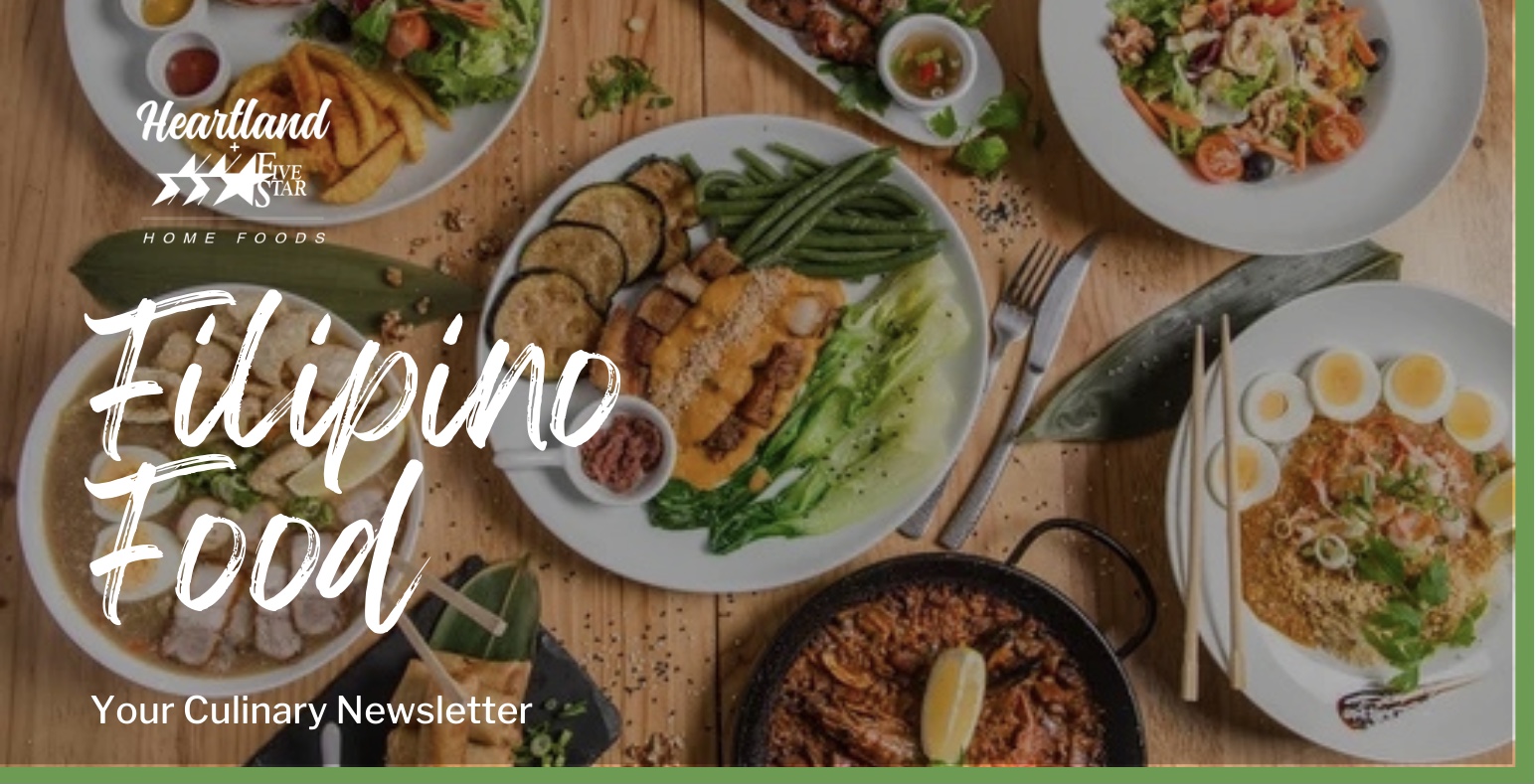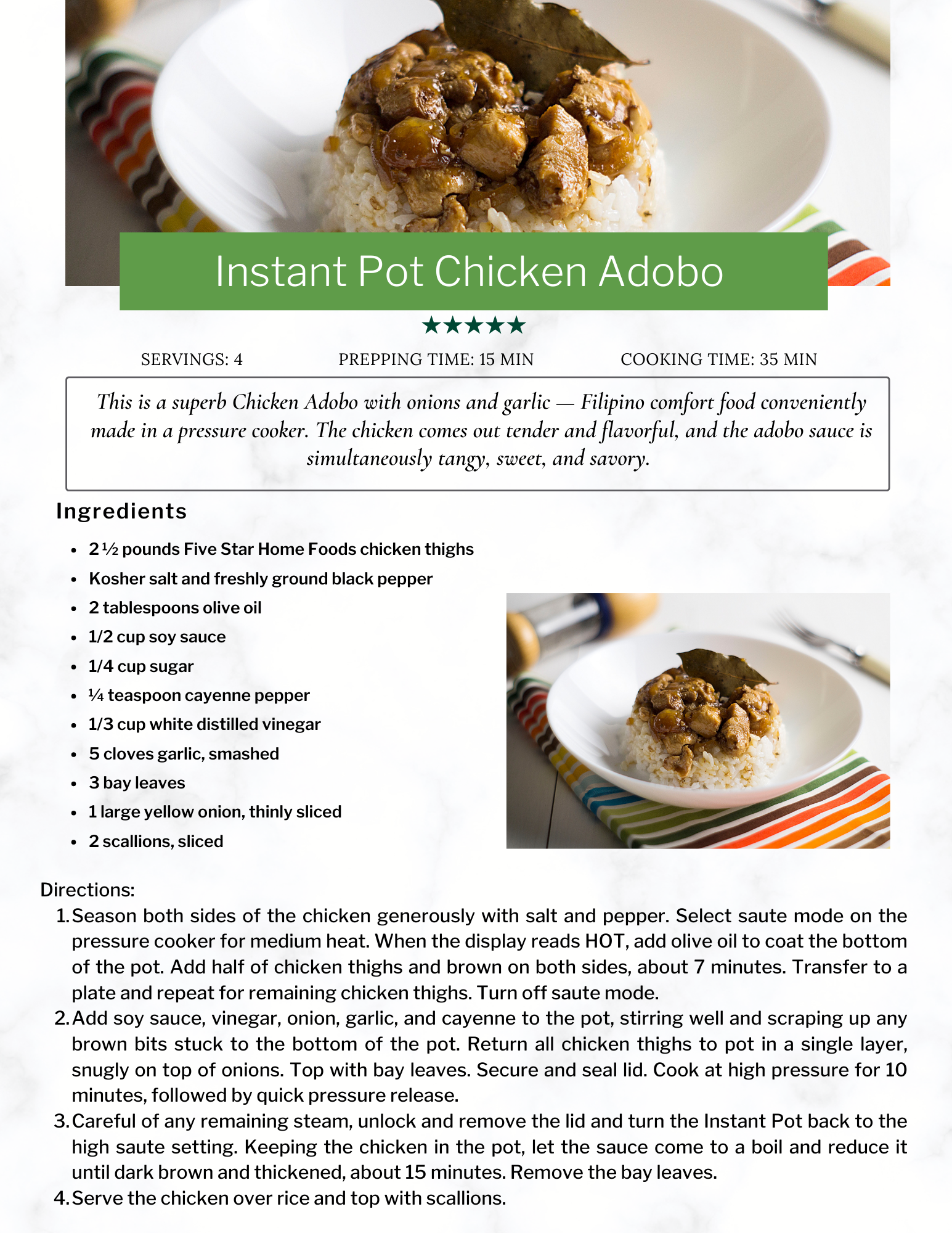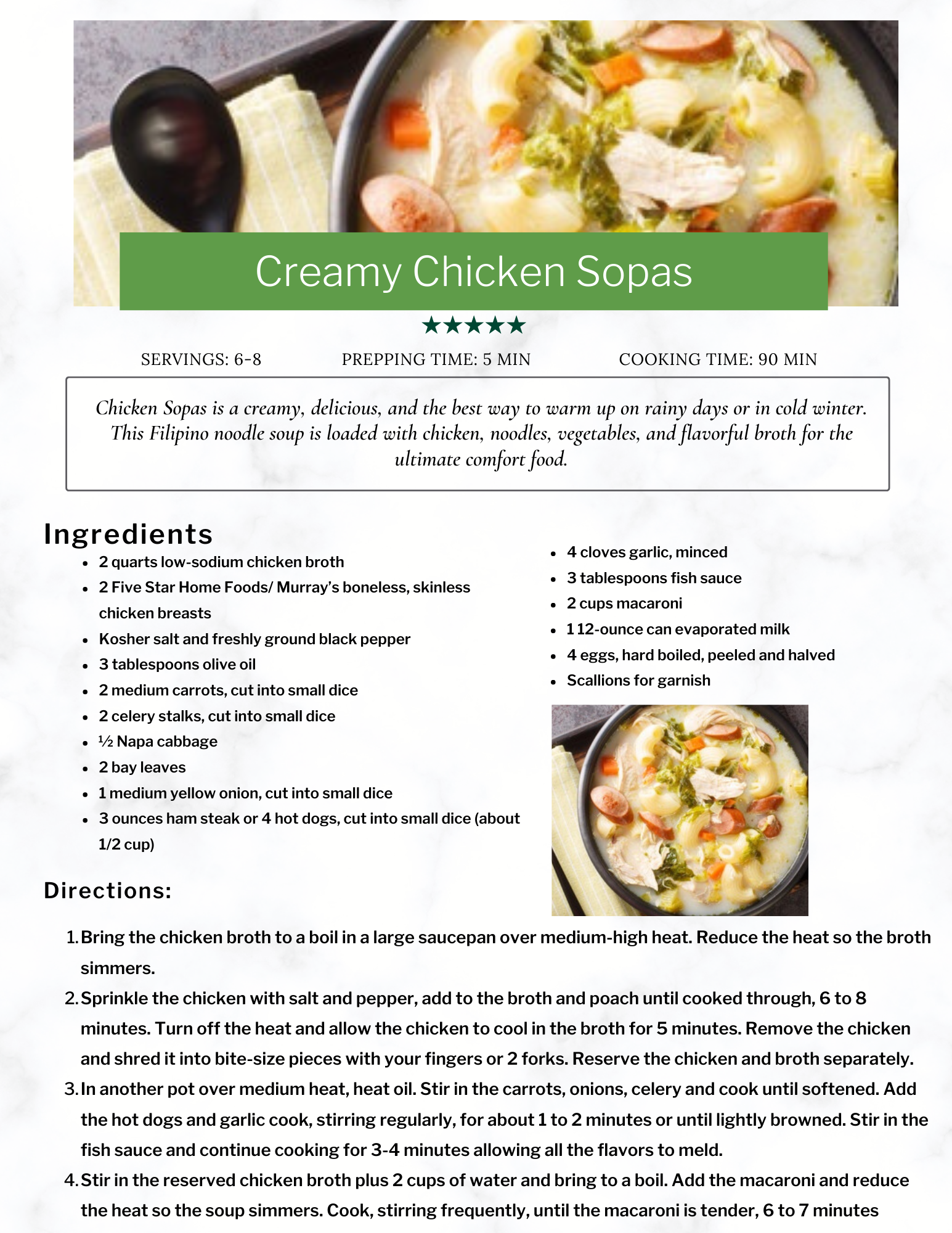
Filipino Food Is The Next Big Thing
While Filipino cuisine has been delighting taste buds for centuries with its phenomenal flavors, it is finally getting its day in the sun, with culinary experts and restaurant forecasters hailing Filipino cuisine as the “next big thing.” Much of that has to do with the country’s multi-cultural influence. Because of the country’s colonial history, Filipino food has evolved into a melting pot of eastern and western influences, so much so that some writers have described it as “Asian fusion before Asian fusion even existed.” From deep-fried lumpia rolls to sweet leche flan, you can find Chinese, Spanish, or one of 182 Indigenous groups’ influences in almost every dish.

Filipino food is simple to cook and always a pleasure to serve and eat. The blend of flavor and texture makes for bold cuisine. The typical Filipino meal is composed of vegetables, seafood, dairy, meat, and rice. In fiestas, food is displayed, in all its appetizing and mouth-watering color, in every home as an aesthetic. The naturally produced aroma seduces anyone and traps them through effective means. Its smell makes it unique because of the secret concoction of vegetables, herbs, oils, citrus, and spices. Because flavors in the Philippines are often strong, having only a few spices packs a punch.
What does Filipino food taste like?
Filipino food is characterized by the combination of three flavors: sweet, sour, and salty. Compared to other Southeast Asian countries, spices and heat don’t figure as prominently in traditional Filipino cuisine. Garlic, ginger, bay leaves, and black pepper are most often used. Filipinos encourage the use of sawsawan, or dipping sauces. This is usually a combination of calamansi (a Philippine lime), soy sauce, vinegar, fish sauce, onions, garlic, and chilies. As in most Asian countries, the staple food in the Philippines is rice. It is most often steamed and always served with meat, fish, and vegetable dishes. Leftover rice is often fried with garlic to make sinangag, which is usually served at breakfast together with a fried egg and cured meat or sausages.
Filipino Agriculture
Filipinos believe in using the freshest ingredients, often packing the markets in the morning to choose produce that is harvested at just the right time, fish that was caught in the early morning hours, and meats that have arrived straight from the butcher. The difficulty in the Philippines is that they have struggled to create a sustainable food system due to extreme poverty, climate change, and a lack of adequate infrastructure. But that is changing thanks to several nonprofit groups and global organizations such as the United Nations, the Global Food Banking Network, and the Worldwide Wildlife Fund. Over the last five years, agriculture, fishing, and poultry have increased by nearly 5%. These victories were made possible because of the hard work and determination of Filipino farmers and fishermen, vegetable growers, livestock raisers, and others who continue to research, develop, and adapt new and modern technologies and farm systems to create a sustainable food supply.
Filipinos take great pride in their culture, and food is an essential element. Food brings them together, and it is frequently served family-style because they believe that the more, the merrier, and everyone is encouraged to help themselves. There’s always plenty of white rice, and the dishes meant to be served with that rice line the center and, sometimes, the perimeter of the table. Any empty space is usually taken up by small bowls of vinegar, fish sauce, bagoong (fermented seafood sauce or paste), and slices of calamansi (a citrus fruit), all of which are used to season the food to each diner’s individual taste.
Here are the most popular traditional Filipino dishes:
Adobo
No list of Filipino foods would be complete without adobo. A dish in every household in the Philippines, it’s Mexican in origin. But Filipinos found that cooking meat (often chicken, pork, and sometimes seafood) in vinegar, salt, garlic, pepper, soy sauce, and other spices was a practical way to preserve it without refrigeration.
Lumpia
Influenced by Chinese cuisine, this dish is a delicious deep-fried spring roll. The roll is stuffed with a mixture of chopped vegetables and minced meat. Combined with the right sauces, it is the most scrumptious dish you will ever have for lunch. This is definitely a traditional Filipino dish, and after trying it, you will never look at spring rolls the same way again.
Inasal
This is no ordinary grilled chicken. The meat is marinated in lemongrass, calamansi, salt, pepper, and garlic and brushed with achuete (annatto seeds) oil. Every part of the chicken is grilled here, from the paa (drumstick), pecho (breast), baticulon (gizzard), atay (liver), pakpak (wings), and corazon (heart). It must be eaten with a generous serving of garlic rice, with some of the orange oil used to marinade the chicken poured over the rice.
Pancit
Pancit is a simple dish made with noodles that can be mixed with whatever meats and vegetables you desire. Pancit is a name that originated from the Hokkien term “pian e sit,” which means “something conveniently cooked.” It might be simple, but it is rich with flavor, and you will definitely love every bite of it.
Sinigang
Sinigang is a traditional Filipino food that is both sour and savory. The dish is a stew made with spinach, eggplant, tomatoes, onions, ginger, and fish sauce. You can use any of the following meats in the dish: pork, beef, fish, or shrimp. No matter which one you choose, the result is always a mouthwatering stew served with rice or eaten on its own as soup.
Arroz Caldo
The name “arroz caldo’ literally translates to ‘rice soup’ in English. While chicken soup soothes sick Westerners, Filipinos turn to arroz caldo, a thick chicken rice porridge. Cooked with ginger and sometimes garnished with a hard-boiled egg, toasted garlic, and green onions, this Filipino food is sold in streetside stalls.
Leche Flan
One of the most popular Filipino desserts, inspired by the Spanish, is leche flan. Meaning ‘milk flan’ in English, leche flan is a custard dessert made of pudding with a soft layer of caramel on top. The texture is smooth and creamy, and the flavor is rich and sweet.
Interested in trying a bit of east-meets-west crossover? Check out your local Baskin Robbins. Enjoy swirls of photogenic ube, a purple yam, and coconut ice cream set off with an eye-catching ribbon of deep purple with their limited flavor, Ube Coconut Swirl, this spring.

Filipino Recipes:
Below we have shared two of our favorite traditional Filipino recipes; Instant Pot Adobo and Chicken Sopas.
Chicken Adobo is incredibly flavorful with lots of garlic and onions. Our spin on this Filipino comfort is conveniently made in an Instant Pot, making the chicken tender, juicy and when paired with the tangy, sweret and savory adobo sauce makes for the ultimate comfort food.
While Americans have chicken noodle soup, Filipinos have Chicken Sopas. Chicken Sopas is a creamy, delicious and the best way to warm up on rainy days or in those deep days of winter. This Filipino soup is loaded with chicken, noodle, vegetables and a flavorful broth for the perfect winter soup – comfort in a cup.
We hope and encourage you to invite family and friends over to create your own Farm-to-Freezer Filipino feast.






